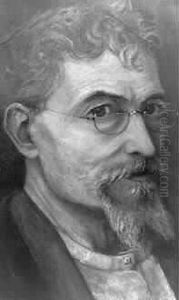Jean-Baptiste Sabatier-Blot Paintings
Jean-Baptiste Sabatier-Blot was a French artist known for his contributions to the world of lithography and printmaking during the 19th century. Born in 1790, Sabatier-Blot emerged in a period of significant artistic and technological changes, which saw the rise of lithography as a popular medium for artistic expression and reproduction. His work is often associated with the Romantic movement, which emphasized emotion and individualism, as well as glorification of the past and nature.
Sabatier-Blot's career was marked by his mastery of lithography, a technique that allowed for the mass production of images and played a crucial role in the democratization of art. He was adept at capturing both the grandeur of landscapes and the subtleties of human expressions, making his works widely appreciated for their beauty and technical skill. Throughout his career, Sabatier-Blot contributed to various publications and projects, illustrating literary works and historical events, which helped to popularize lithography as an art form.
Despite his contributions to the art world, Sabatier-Blot's name may not resonate as widely as some of his contemporaries. This, however, does not diminish the significance of his work or his role in the evolution of printmaking techniques. His efforts helped pave the way for future generations of artists and printmakers, influencing the development of visual culture in the 19th century.
Jean-Baptiste Sabatier-Blot passed away in 1860, leaving behind a legacy that, while perhaps not as celebrated as that of some of his peers, remains important for its contributions to the advancement of lithography and the broader history of French art. Today, his works are studied for their technical excellence and their reflection of the societal and artistic movements of his time.


